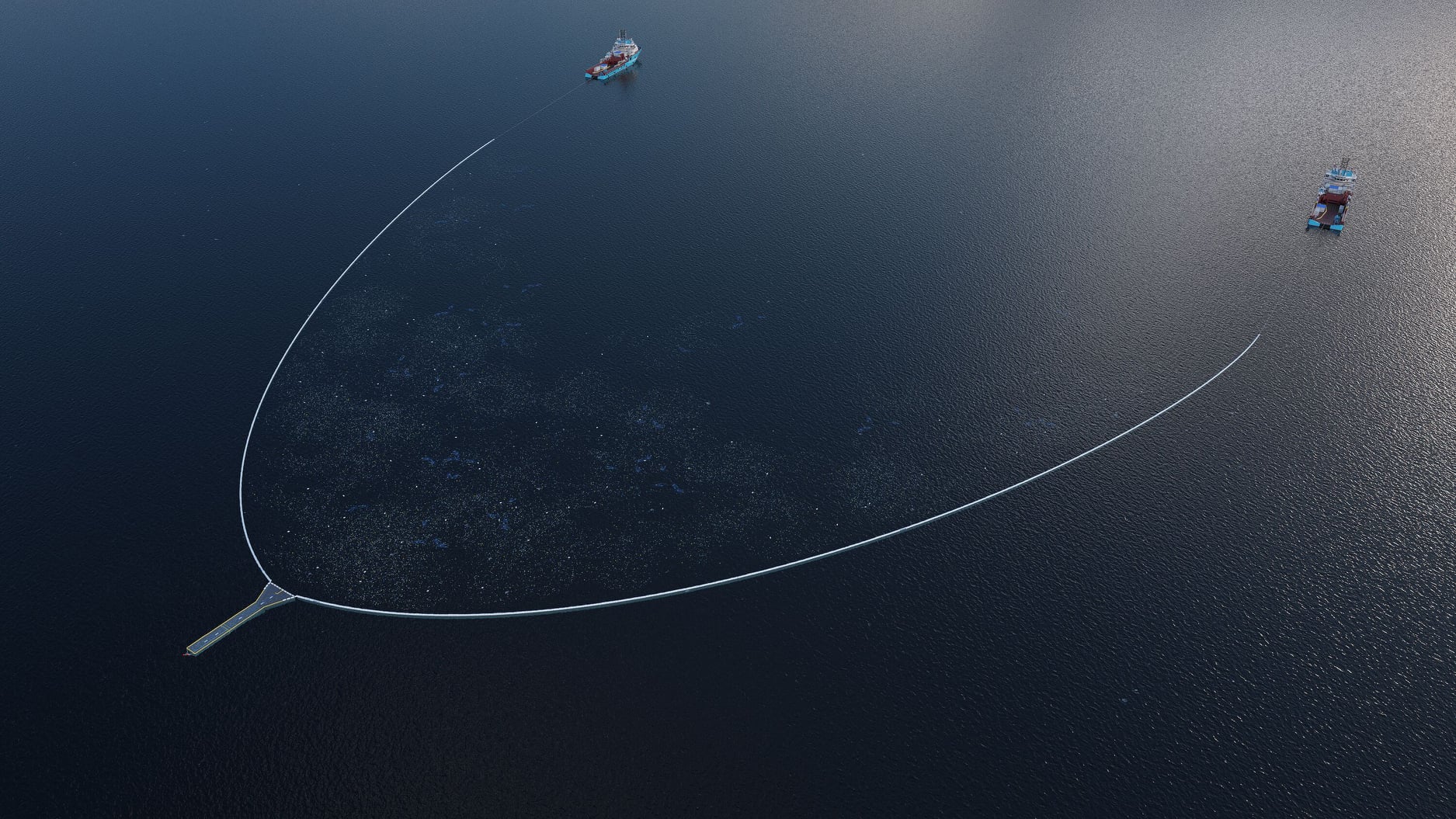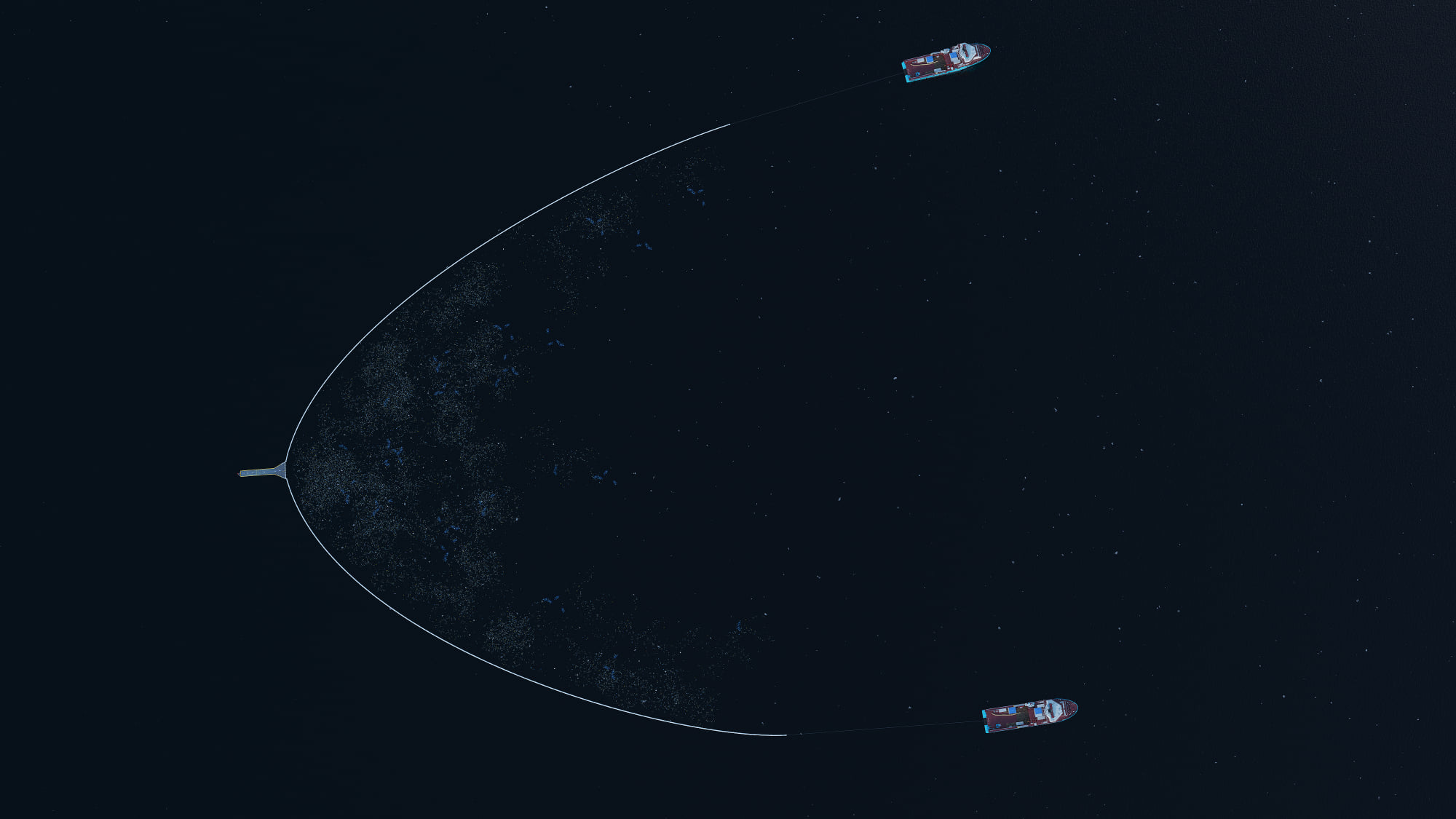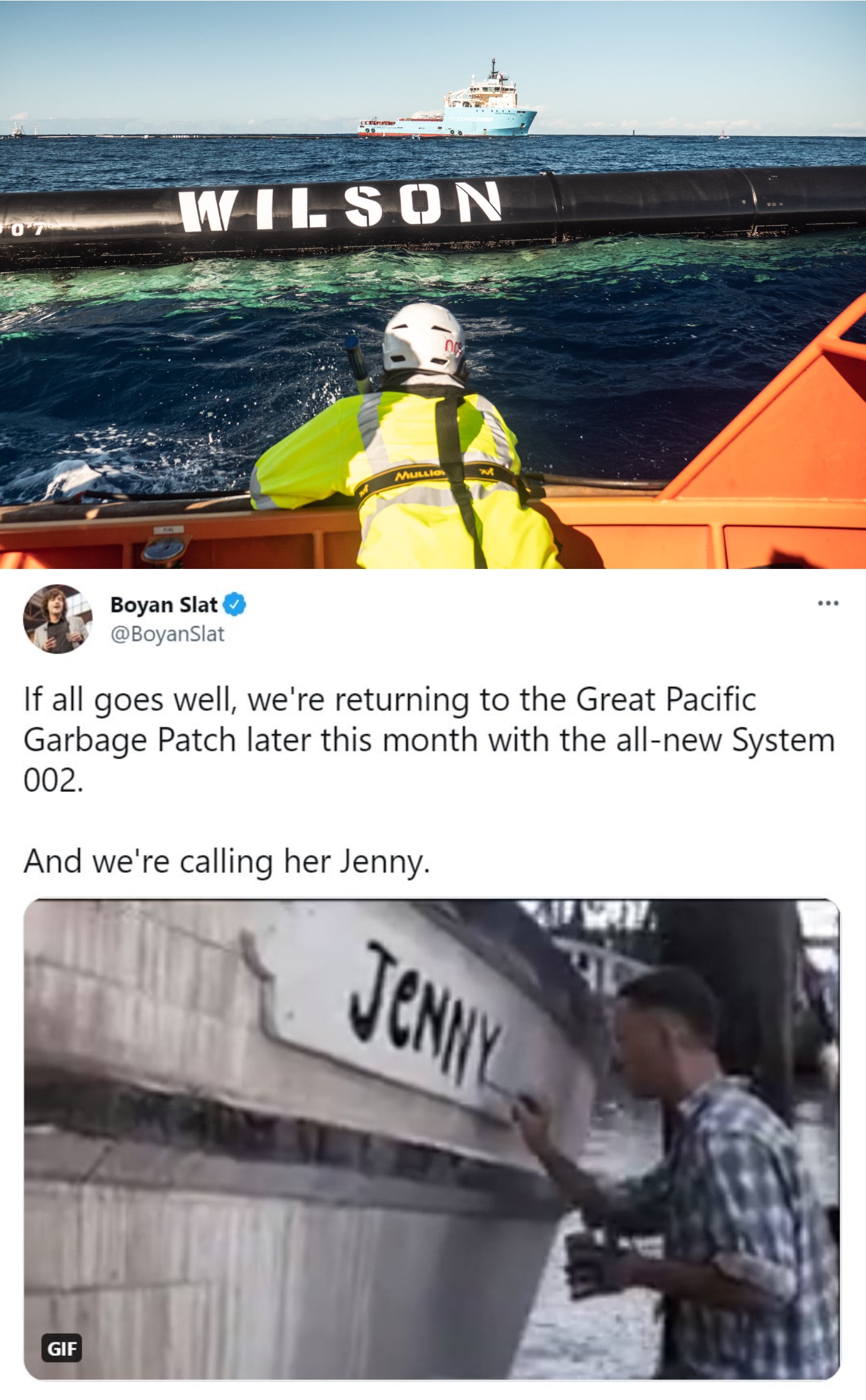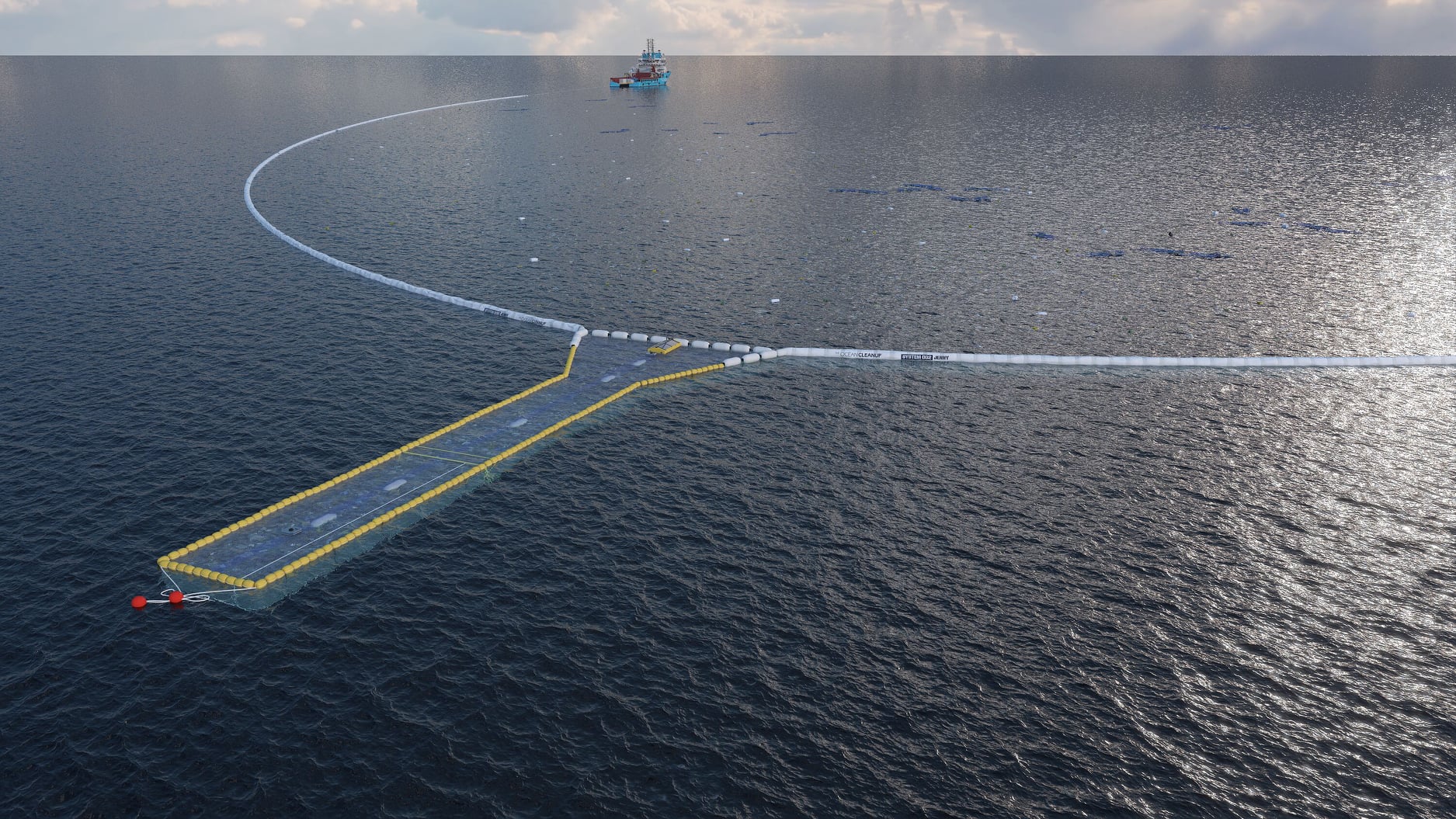
- Sustainable Planet -
- 4mins -
- 1,868 views
A Faster Way to Clean the Oceans: The Ocean Cleanup System 002 Technology Update
Dutch entrepreneur Boyan Slat’s The Ocean Cleanup project is about to launch System 002, aimed at cleaning an area equal to 1 soccer field of ocean plastic every 15 seconds.
OceanCleanup’s SYSTEM 002 TO LAUNCH IN JULY, 2021
On Monday, July 5th, 2021 The Ocean Cleanup gave a detailed update on the design of their next ocean cleanup system at the annual IMarEST (Institute of Marine Engineering, Science & Technology) conference. System 002, OceanCleanup’s latest cleanup system, is set to launch end of July 2021. It will be their first large-scale cleanup system and they are hoping for a multifold impact compared to their previous cleanup system – System 001/B.

The ocean cleanup TECHNOLOGY ROADMAP
Trash accumulates in five ocean garbage patches, the largest one being the Great Pacific Garbage Patch, located between Hawaii and California. If left to circulate, the plastic will impact our ecosystems, health, and economies. Solving it requires a combination of closing the source, and cleaning up what has already accumulated in the ocean.
The ocean is big. Cleaning up the Great Pacific Garbage Patch using conventional methods – vessels and nets – would take thousands of years and tens of billions of dollars to complete. After fleets of The Ocean Cleanup systems are deployed into every ocean gyre, combined with source reduction, The Ocean Cleanup projects to be able to remove 90% of ocean plastic by 2040.
By trialing technologies, TheOceanCleanup has now confirmed the foundational concept behind their cleanup design: maintaining a relative speed difference between the plastic and the cleanup system to catch and retain plastic in the garbage patches.
Following System 001/B, which used a parachute anchor to keep the system moving slower than the plastic, they concluded that they could not effectively scale up with this design.
Therefore, they shifted gears and are now developing a new approach that uses active propulsion to continuously move faster than the plastic (System 002).
With an actively propelled system, they will be able to catch more plastic quicker and more efficiently because now they can – contrary to the passive approach – steer the systems towards areas with high concentrations of plastic. With System 002, they are now nearing the validation phase for their Ocean project.
Two years ago, Boyan Slat introduced The Interceptor™— the first scalable solution to intercept river plastic pollution — which can be deployed around the world and is capable of extracting between 50 and 100 tonnes of trash per day. Learn more about that here.
Source: TheOceanCleanup

SYSTEM 002 TO LAUNCH IN JULY, 2021
System 002, The Ocean Cleanup’s latest cleanup system, is set to launch end of July 2021. It will be their first large-scale cleanup system and they are hoping for a multifold impact compared to their previous cleanup system – System 001/B. They recently tested the retention zone, which is designed to hold plastic until it’s offloaded. For reference: it is as big as a school bus. Follow OceanCleanup on social media or subscribe to their newsletter for progress updates as they move towards launch. You can watch the full, detailed presentation covering the why, what, and how of the System 002 design by clicking here.



